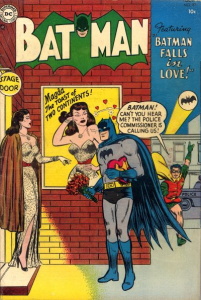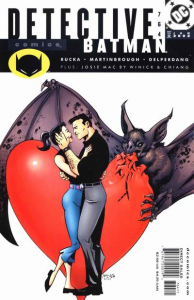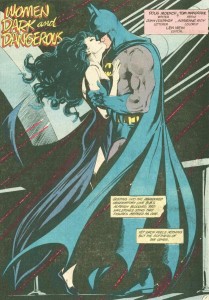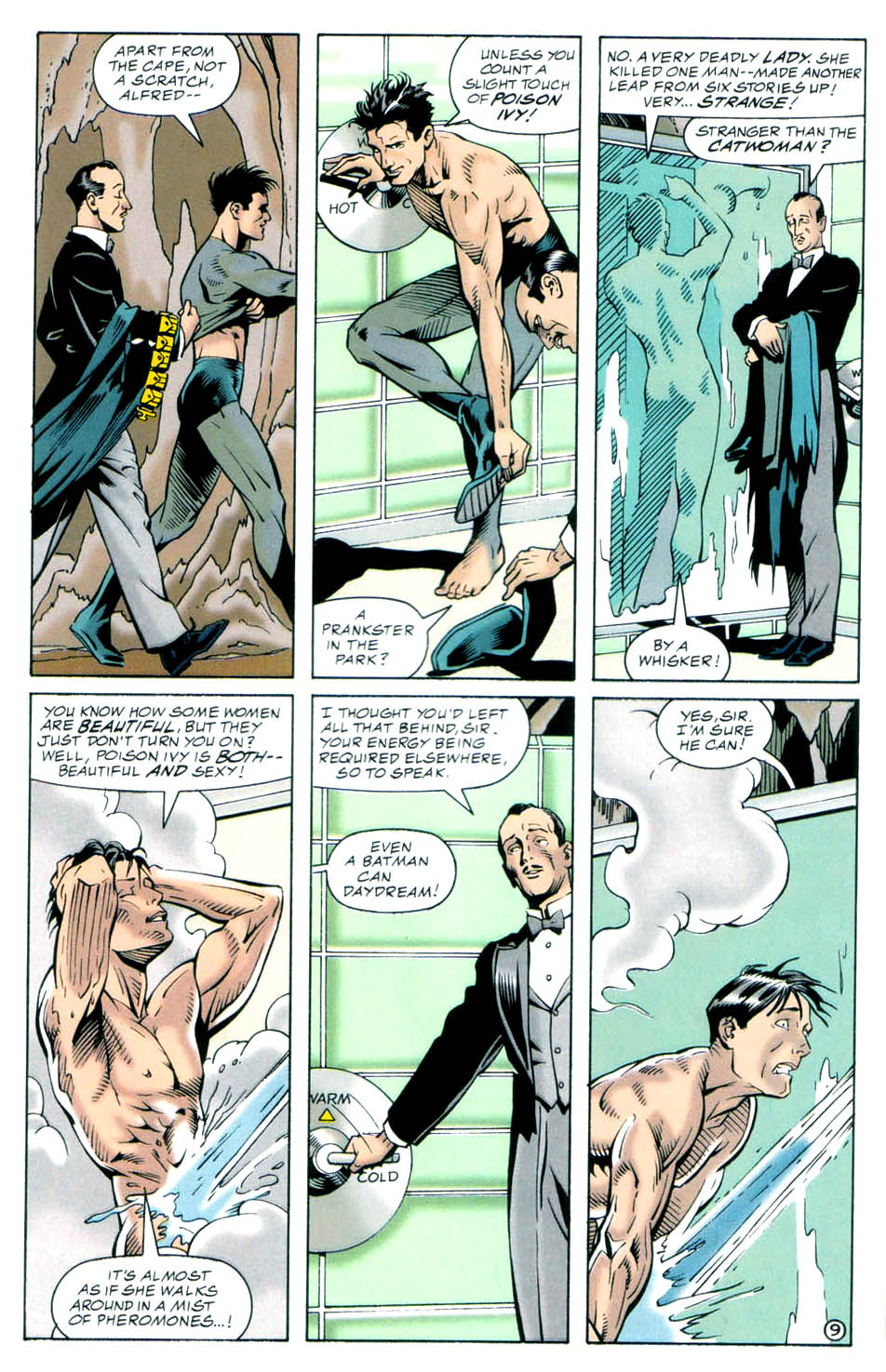The announcement, last month, that Robin (or at least one of several Robins, Tim Drake) is bisexual predictably revived old discussions about the Dynamic Duo’s sexuality, so I figured I’d put together a few loose thoughts to add to that conversation…
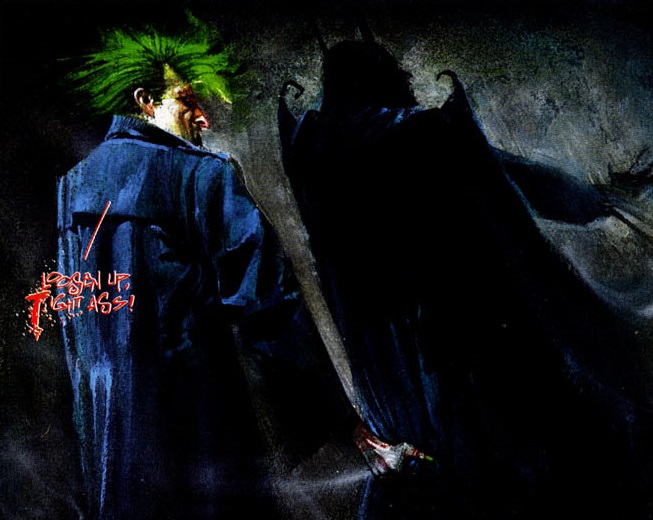 Arkham Asylum: A Serious House on a Serious Earth
Arkham Asylum: A Serious House on a Serious Earth
It’s nice to have another LGBTQ+ character in the franchise, adding to the cast’s diversity and, hopefully, expanding storytelling possibilities. So far, there had been plenty of prominent lesbians in Gotham City, but practically no significant gay or bi men, except for the occasional coding of the Joker (as for transgender characters, apart from the fact that Clayface sometimes shapes himself into a female body to disguise his appearance, the only example I can think of is in H-E-R-O #12-14, where a chauvinistic construction worker accidentally becomes a superwoman… and yes, it sounds like the plot for a goofy comedy, but writer Will Pfeifer takes the story into some truly dark territory).
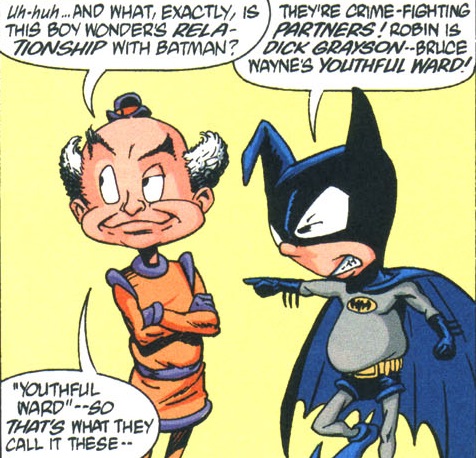 World’s Finest (v2) #6
World’s Finest (v2) #6
That said, the notion that the Dark Knight and the Boy Wonder have a romantic relationship goes way back to the era of the first Robin, Dick Grayson, and it has certainly been reinforced by campy audiovisual adaptations like the 1960s’ Batman TV show and Joel Schumacher’s movies from the 1990s.
While those interpretations may be defensible at a purely subtextual level or based on out-of-context images, however, over the decades they have been repeatedly contradicted from an in-story perspective… Not only have Bruce Wayne and Dick Grayson (and Tim Drake, for whatever it’s worth) been constantly in and out of love with partners of the opposite gender, but they have certainly never expressed those sorts of feelings for each other. Sure, they could be bi, but it seems unlikely that they would never ever talk about it, especially as their mutual attraction to women has been a source of bonding:
 Batman #279
Batman #279
Still, I’m all for reading works of fiction against the grain and dissecting the many hidden layers of popular culture, regardless of the authors’ original, conscious intent. What bothered me, for a long time, was that this specific reading struck me as more facile than insightful.
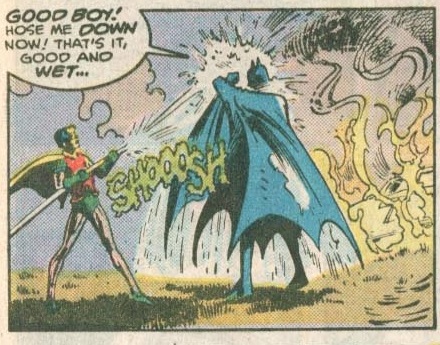 Detective Comics #571
Detective Comics #571
My issue was not with the fact that Batman and Robin became gay icons, embraced by many LGBTQ+ fans and movements, especially as the process of queering these characters could have an empowering effect. What annoyed me were people who smugly acted as if they were being oh-so ‘clever’ or ‘subversive’ by taking this line… There is nothing particularly clever about saying that two male characters are a couple just because they live together, dress in fetishistic-looking clothes, and are often surrounded by enough kitsch to make Pedro Almodóvar proud. If anything, it’s an easy reproduction of simplistic – even homophobic – stereotypes.
If there is a homosexual vibe in Wayne Manor, I’ve always felt, it’s not so much between Batman and Robin (which would carry a disturbing implication of abuse and pedophilia, given that the Boy Wonder is… well, a boy), but between Bruce Wayne and Alfred Pennyworth.
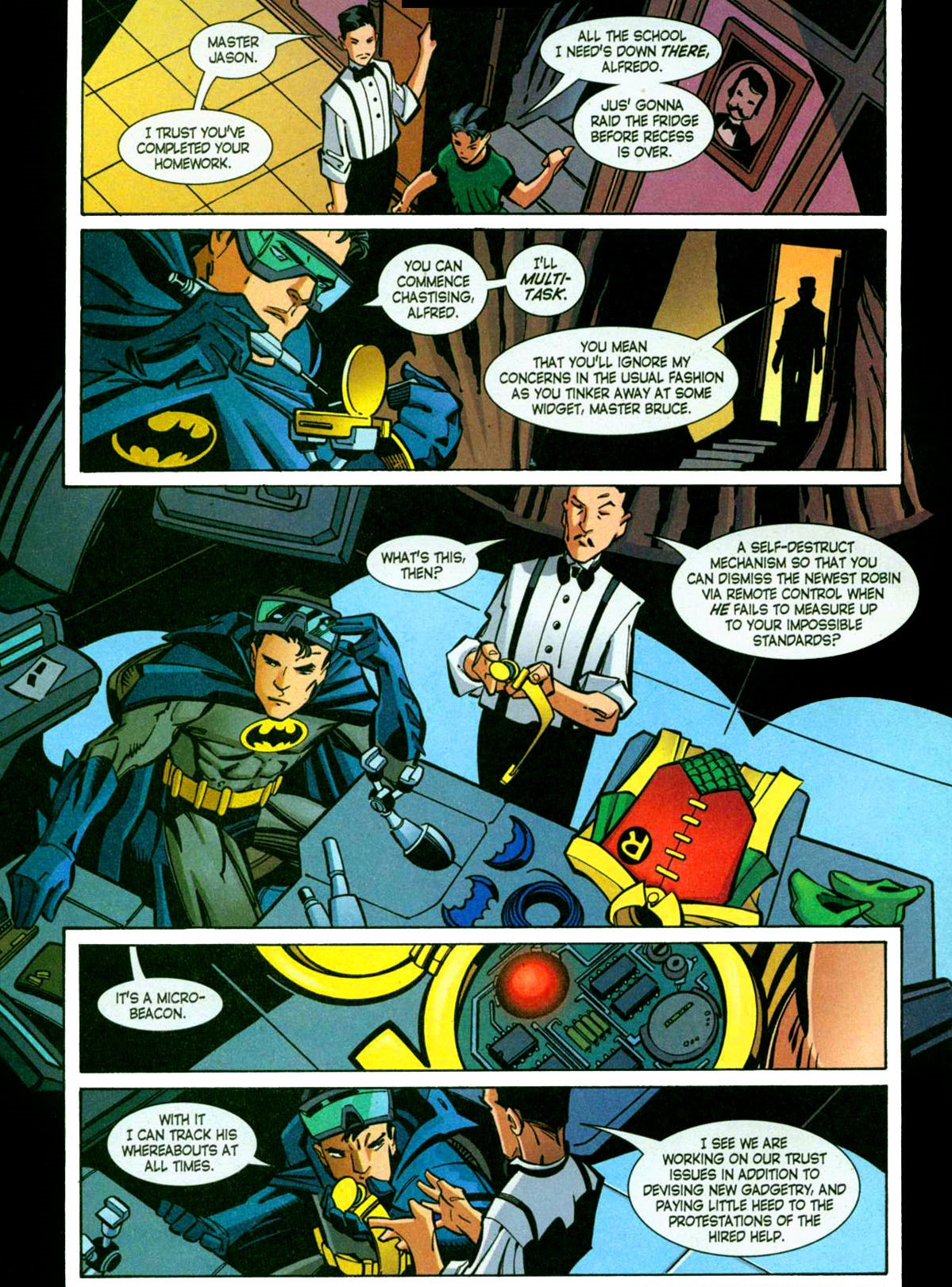 Nightwing #104
Nightwing #104
Bruce and Alfred often bicker like lovers, the latter expressing a level of support and passive-aggressive concern that goes beyond a mere employee. In fact, Alfred traditionally fulfills what used to be taken as the feminine role in the relationship, from the standpoint of conservative family values of the 1940s (when the character was first created): cooking, taking care of the mansion, and handling the household’s emotional labor, thus complementing/compensating for Bruce’s macho stoicism.
In this sense, Dick Grayson and later Jason Todd grew up with a gay couple as surrogate parents.
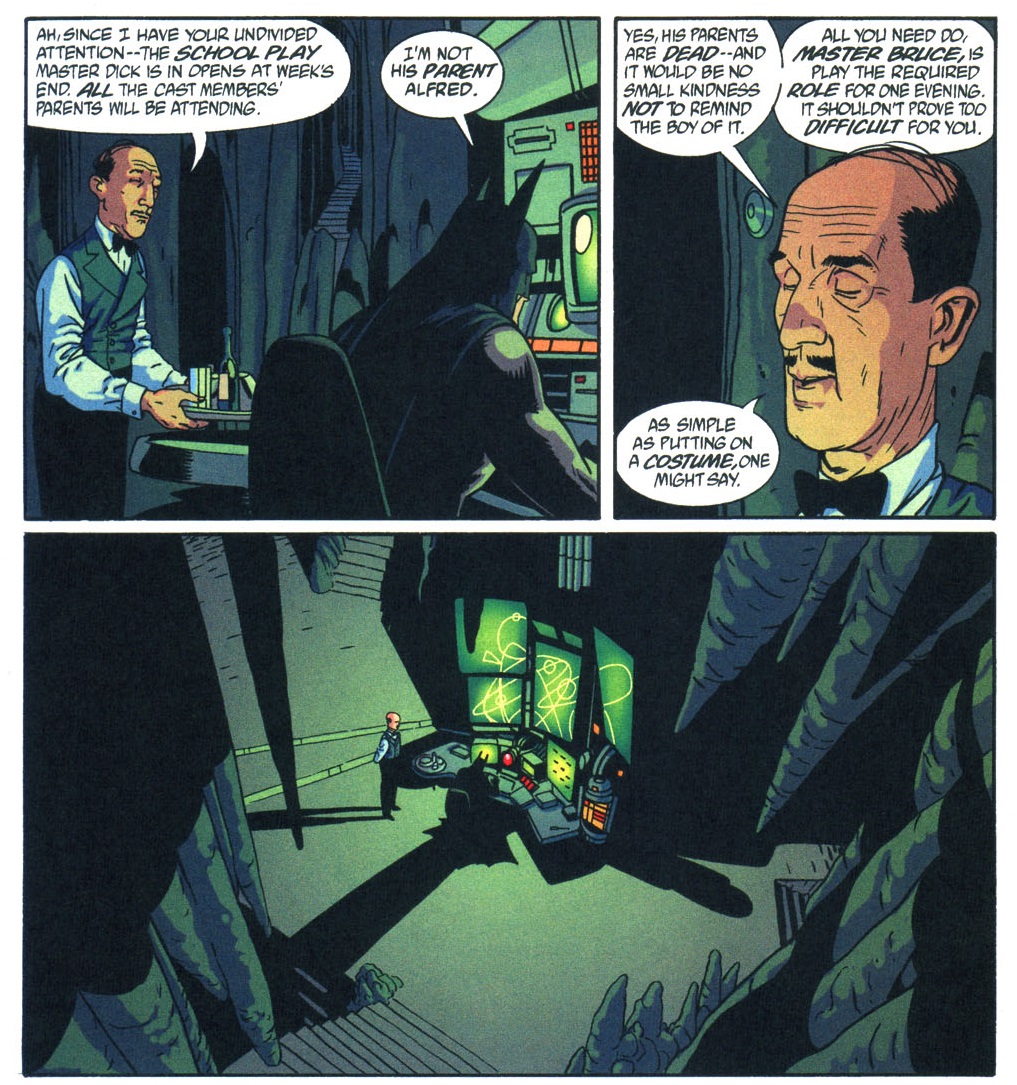 World’s Finest (v2) #4
World’s Finest (v2) #4
To be sure, among geeky circles, the whole discussion about the gay subtext of Batman comics has been poisoned from the start, given its sordid history. After all, the notion that homoeroticism is intrinsically embedded into the core material (in its imagery, at least, if not in its diegetic narrative) was first popularized in the early 1950s by the infamous psychiatrist Fredric Wertham, whose views were used by Congress to attack the comics industry as a whole.
And yet, if there is one character who lends himself to multiple – and sometimes contradictory – readings is the Dark Knight, so I’m always willing to welcome further interpretations, as long as they bring an interesting viewpoint to the table. Scholars and cultural critics such as Will Booker, Andy Medhurst, Chris York, and Glen Weldon, for instance, have all written thought-provoking pieces about this topic.
With that in mind, I’m fascinated by the ways in which even those Batman creators who show no doubts about Bruce Wayne’s heterosexuality nevertheless express different approaches to the issue…
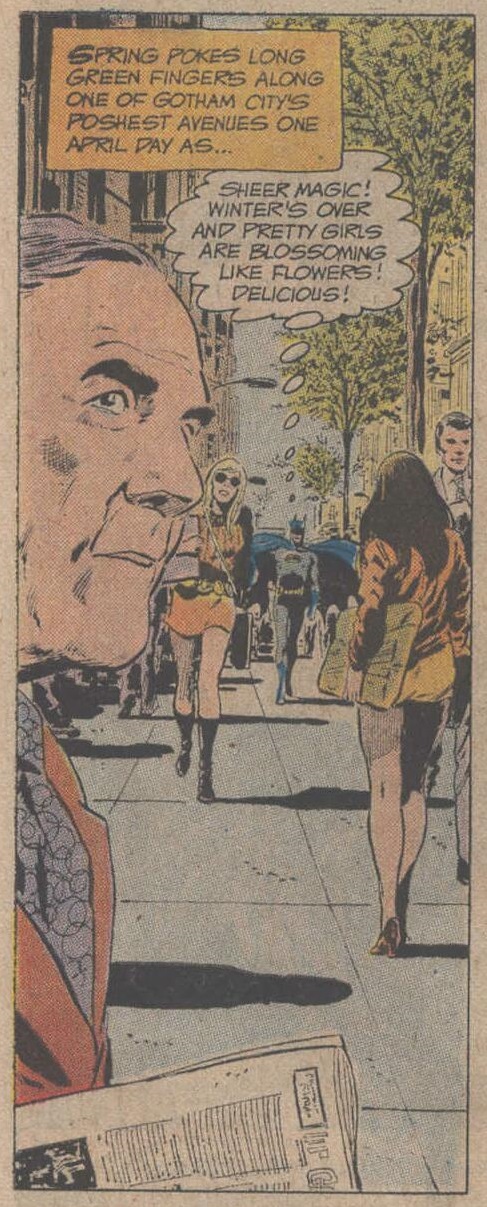 The Brave and the Bold #102
The Brave and the Bold #102
One school of writers have depicted Batman as an unabashed ladies’ man. In theory, this should feel in character, since only a testosterone-driven alpha male would find it reasonable to go out every single night to beat people up. In other words, the Caped Crusader would surely have an outstanding level of confidence and sense of entitlement, not to mention the pro-active attitude that sometimes steps on the border between flirtation and harassment….
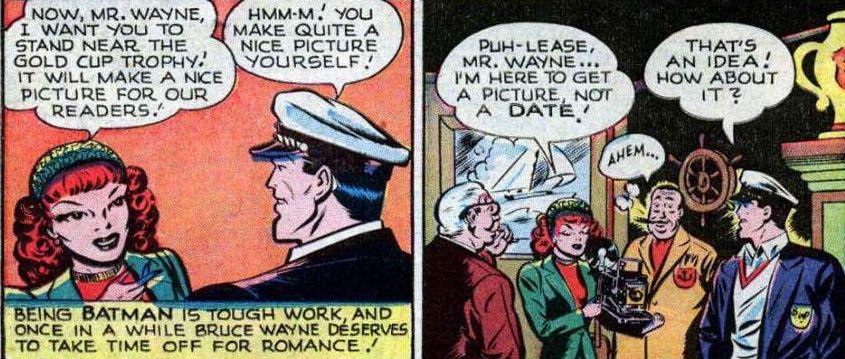 Batman #49
Batman #49
One of the writers who tended to push this idea was David V. Reed, especially during his work on Batman and Detective Comics in the mid-to-late 1970s. Many of his storylines wrapped up with Bruce Wayne making a move on a beautiful woman, usually adding some kind of cheesy line:
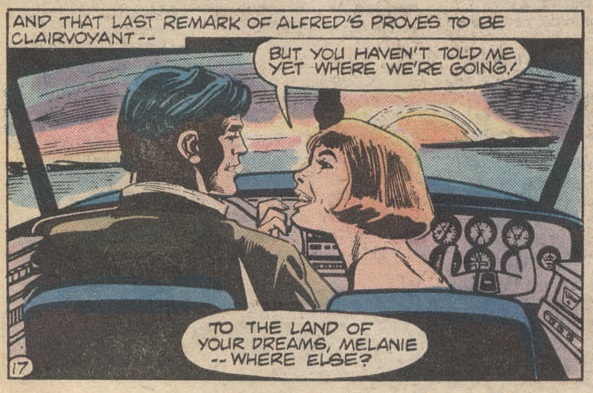 Batman #302
Batman #302
Perhaps Reed and/or his editor, Julie Schwartz, were deliberately trying to offset the fact that the World’s Greatest Detective had become the recurring butt of gay jokes, but my first instinct when I noticed this was to think that they were taking a page from Roger Moore’s James Bond movies at the time, which also typically finished with cringeworthy innuendo.
The Bond series, after all, had come to embody not just a model of virility, but a commercially successful approach to pulpy adventure which Batman comics had been shamelessly pillaging for years. Indeed, 007 joined Zorro and the Shadow as a major influence on this franchise.
Leave it to Grant Morrison to make it explicit:
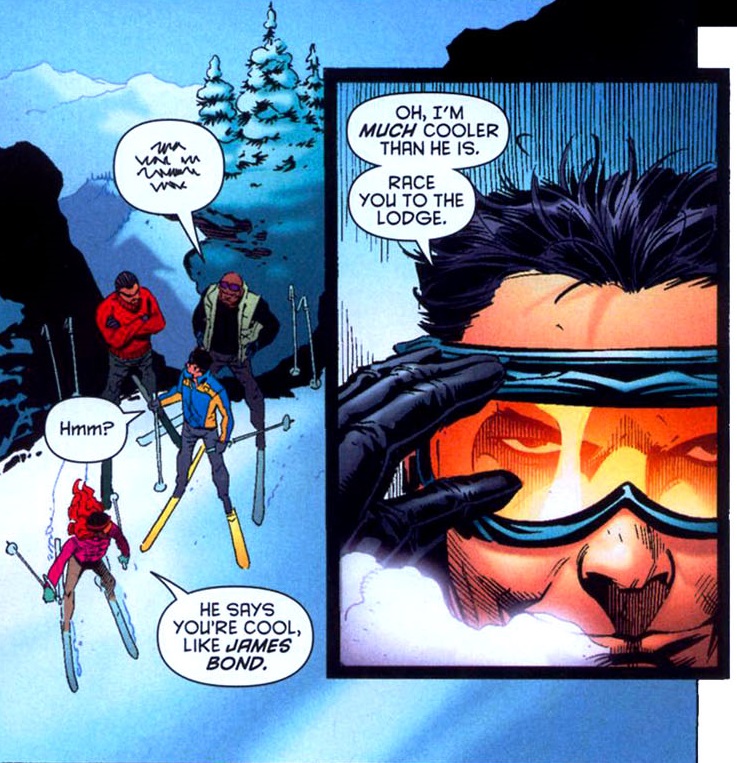 Batman #664
Batman #664
(Morrison being Morrison, he couldn’t resist following this up with a nod to the kind of ski action scenes you find in some of the coolest James Bond films, like On Her Majesty’s Secret Service, The Spy Who Loved Me, The Living Daylights, and The World Is Not Enough… as well as in the crappy For Your Eyes Only.)
To be fair, the very thought of the Dark Knight having sex is entertaining – and not just because of his Bat-sexiness. There is the perverse, iconoclastic thrill of imagining a childish concept in an adult situation, not to mention the hilarious contrast between such a pleasureful act and the character’s exaggerated broody persona:
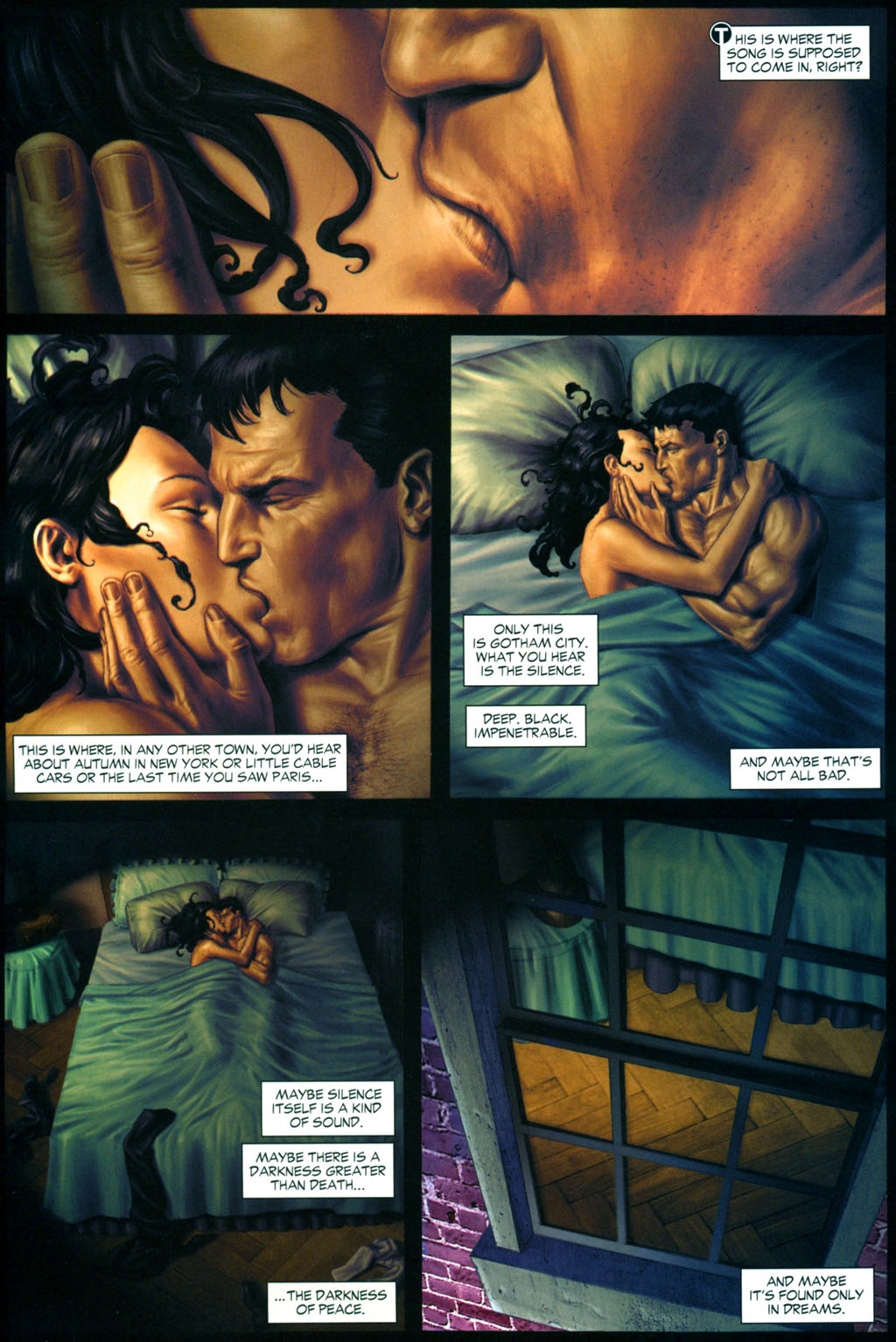 Legends of the Dark Knight #207
Legends of the Dark Knight #207
(There are plenty of bizarre erotic comic books out there, but steamy scenes with Batman are a whole subgenre of kink…)
As much as I like it when Batman relaxes and enjoys himself every once in a while, though, I’m not a huge fan of such a hyper-sexualized characterization. Perhaps it has to do with the fact that in the past decades this has become associated with some of the worst comics written by Judd Winick, Kevin Smith, and Frank Miller…
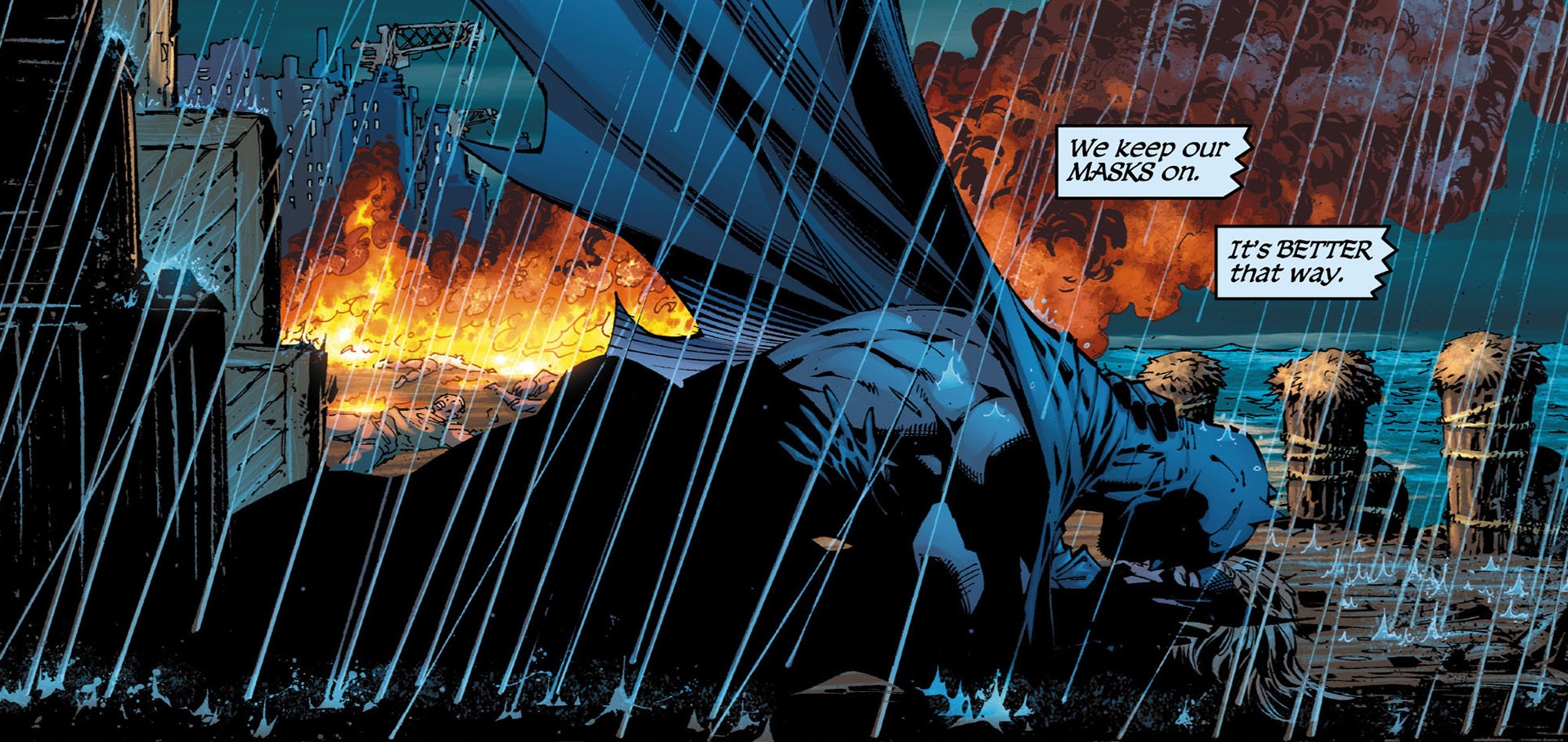 All Star Batman & Robin the Boy Wonder #7
All Star Batman & Robin the Boy Wonder #7
Not that there haven’t been some more tasteful depictions of the Caped Crusader’s libido as well…
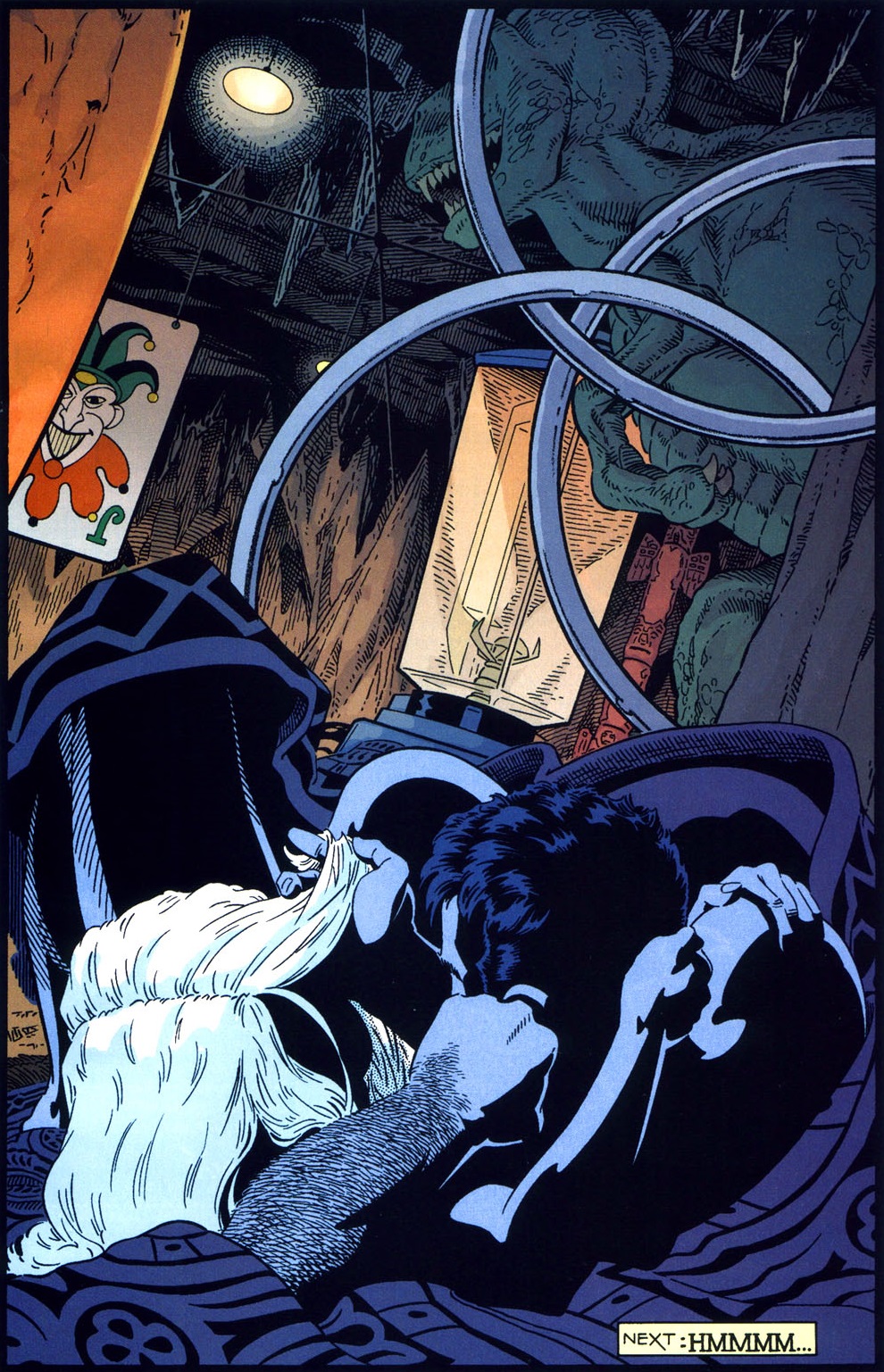 Dark Detective #2
Dark Detective #2
I guess it also has to do with the fact that Bruce Wayne tends to mobilize everything around him towards his mission (his wealth, his intellect, even his children), so it makes more sense to think of him weaponizing his sex appeal rather than merely giving in to unbridled horniness.
Unlike his inspirational role model, Zorro in the very fun 1940 swashbuckler Mark of Zorro, who pretends to be gay to safeguard his alter ego (because Latin machismo doesn’t allow anyone around him to suspect such an effeminate figure is a kickass hero), Batman’s secret identity involves pretending to be a proudly straight playboy, unapologetically hedonistic and empty-headed…
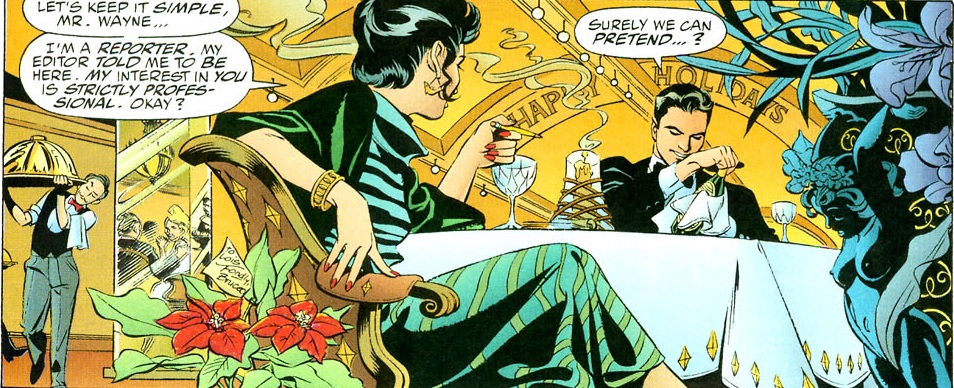 World’s Finest #2
World’s Finest #2
Let’s be clear here: the notion that Bruce is regularly sleeping with women just to instrumentally protect his cover raises some ethical problems as well – not so much because of his promiscuity, but because he’s necessarily misleading his various sexual partners and callously using them, even though for all we know they aren’t very emotionally involved either. So yeah, it’s not a good look for a powerful rich guy, particularly in this day and age, but what the hell, these are all adults with their own agendas and, in any case, a degree of deception comes with the territory when we’re dealing with the peculiar genre of masked crimefighters.
Being of a more conservative bent, Chuck Dixon found a way around this issue in ‘Knight Out’ (Detective Comics #711), which suggested that Bruce Wayne’s womanizing reputation was entirely built on rumor – Bruce doesn’t actually go to bed with his gorgeous dates at the end of the night, but because of his status they are too embarrassed to admit it… or nobody believes them when they do.
While I don’t think this is very convincing, especially when you consider we are dealing with so many different women, at the end of the day the whole Batman mythos is filled with tons of convenient and convoluted concepts requiring great suspension of disbelief anyway… Also, besides preserving our hero’s relative pureness and chivalry, this solution aligns well with the idea that the Dark Knight is all about discipline and control, so he would naturally keep his red-blooded instincts in check.

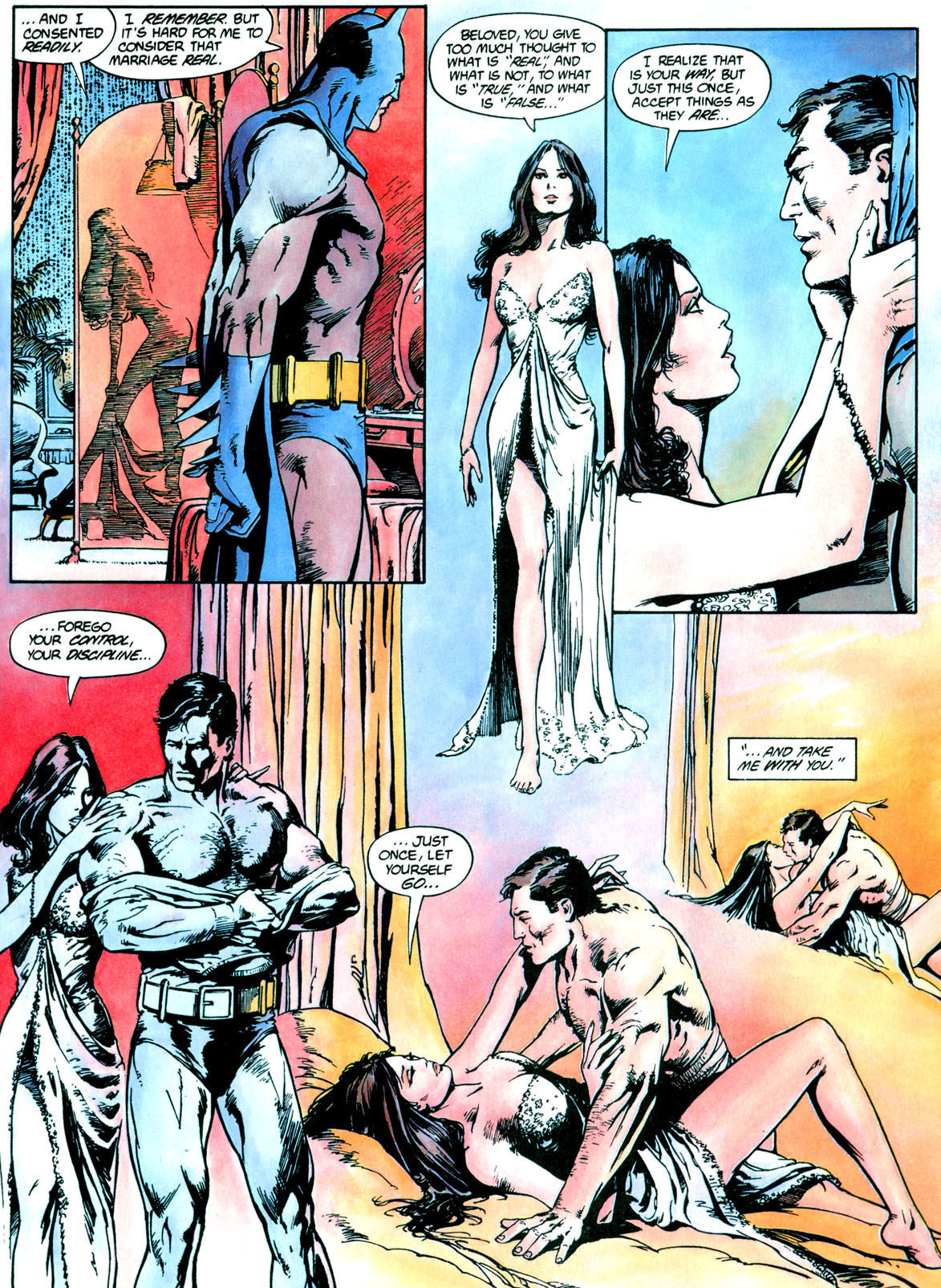 Son of the Demon
Son of the Demon
The scans above depict a nuptial encounter between Bruce Wayne and Talia al Ghul, one of the women he seems to have been genuinely attracted to. There have been a number of those throughout the years, although some creators were more successful than others in terms of selling Batman’s passion.
Personally, I’m particularly fond of his romances with Nocturna and Catwoman:
Batman #390 Batman #610
I know what you’re thinking and yes, it’s true, the Caped Crusader does have a thing for bad girls…
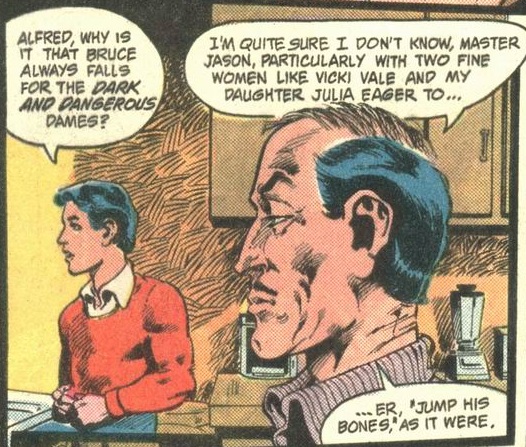 Detective Comics #548
Detective Comics #548
Then again, the sexual tension between Batman and Wonder Woman has been explored in more than one iteration of the DC Universe, in the comics as well as on the screen, to the point where even Batman: The Brave and the Bold had its own amusing take on it… In the fan-favorite issue ‘The Bride and the Bold’ (The All New Batman: The Brave and the Bold #4), Eros magically ramps up their mutual desire, leading to a classic punchline as the Dark Knight explains that there is only one lady in his life… Justice!
Justice it is, man, but hey, that doesn’t mean sexual temptation doesn’t have its place when it comes to crimefighting in Gotham City:

